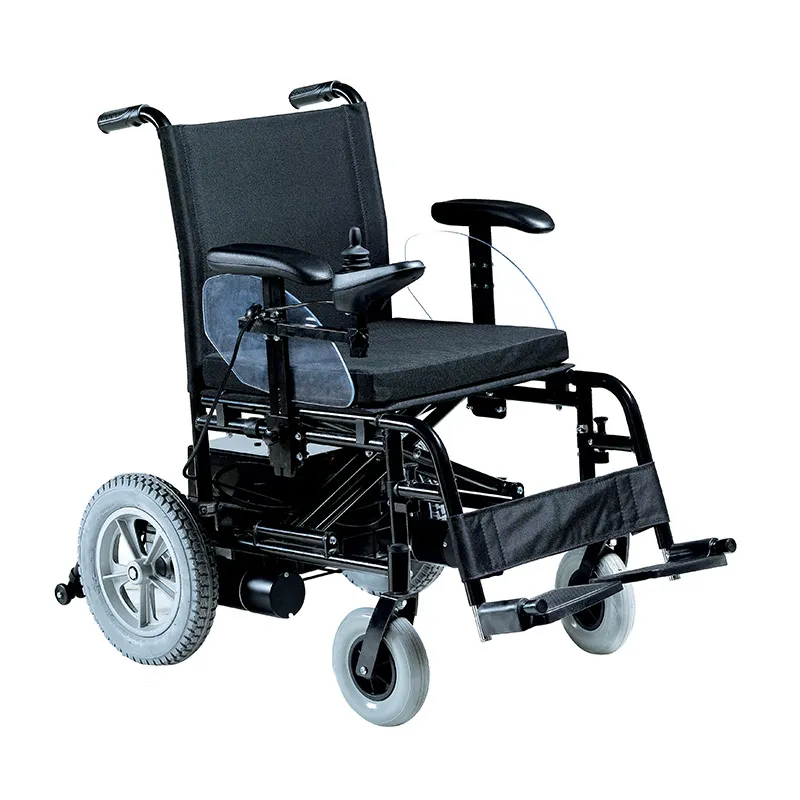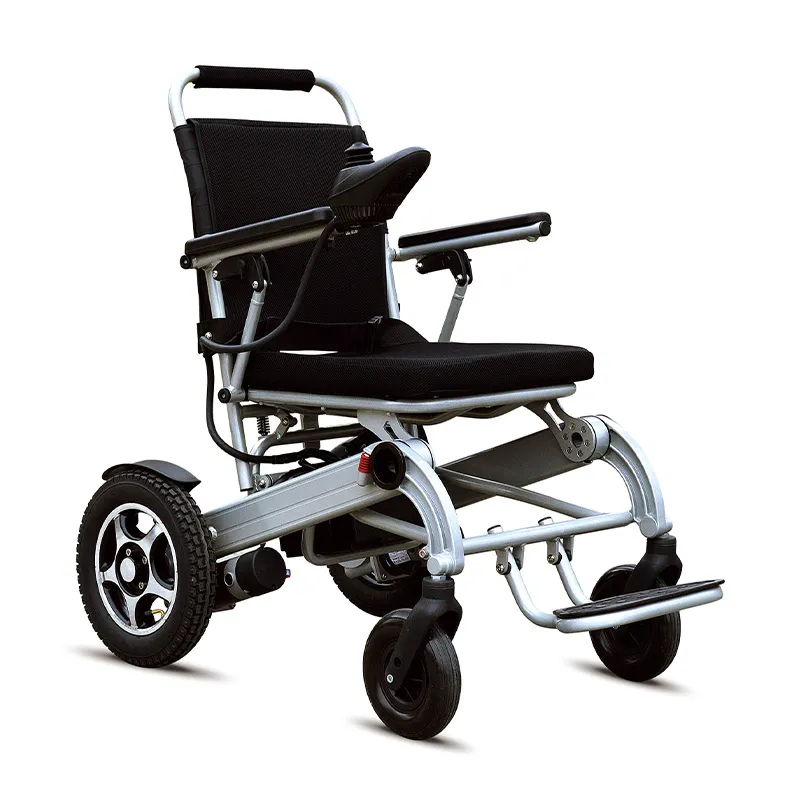
Should I leave my power wheelchair plugged in at all times?
2024-09-24 15:30
Electric wheelchairs provide great convenience and independence for people with limited mobility. However, issues regarding battery management and maintenance often trouble users. A common question is: "Should I leave my electric wheelchair plugged in at all times?" This question involves battery life, safety, charging efficiency, and many other aspects.
This article will provide an in-depth analysis of these factors to help users make informed decisions.

What are the types and characteristics of electric wheelchair batteries?
Battery type:
Electric wheelchairs typically use two types of batteries: lead-acid and lithium-ion.
● Lead-acid batteries: This is a traditional battery type that is relatively cheap but heavy and has a relatively short life.
● Lithium-ion battery: This kind of battery is more advanced, light weight, long life and fast charging, but the price is higher.
Battery characteristics:
The performance and life of the battery are affected by many factors, including charging method, depth of discharge, usage environment, etc. Proper charging and usage methods can significantly extend the battery life.
Analysis of the pros and cons of keeping an electric wheelchair plugged in
Benefit analysis:
● Avoid over-discharging the battery: Prolonged non-use or deep discharge of the battery will damage its life. Keeping the battery plugged in keeps the battery fully charged and avoids over-discharge.
● Convenient to use: For some users with limited mobility or poor memory, keeping the power plugged in means that there is no need to remember to charge frequently, and the wheelchair can be used at any time.
Risk analysis:
● Risk of overcharging: Although modern battery management systems (BMS) usually prevent overcharging, continuous charging for a long time may still have certain negative effects on the battery, especially for batteries without a complete management system.
● Battery heating: Charging for a long time may cause the battery to heat up, which will not only affect battery life, but may also pose safety risks.
● Energy consumption and cost: Leaving the power plugged in all the time will lead to continuous power consumption. Although the single consumption is not large, it will increase the cost of electricity over a long period of time.
What is the best way to charge an electric wheelchair battery?
In order to maximize battery life and ensure safety, users should avoid over-discharging and try to charge when the power is below 20%-30%, rather than waiting until the battery is completely exhausted. This can reduce the damage to the battery caused by deep discharge. Secondly, avoid plugging it in for long periods of time. Although modern battery management systems can prevent overcharging, keeping it plugged in for a long time may still have adverse effects on the battery. It is recommended to unplug the charger as soon as possible after the battery is fully charged.
Even if the wheelchair is not used for a long time, the battery should be charged once a month to maintain battery activity and performance. In addition, charging in a high-temperature environment will accelerate the aging and damage of the battery. Try to charge at room temperature.

What is the role of the battery management system (BMS)?
Modern electric wheelchairs are usually equipped with a battery management system (BMS), which can monitor the status of the battery and prevent overcharge, over-discharge, short circuit and other problems. BMS plays an important role in extending battery life and ensuring safety.
1. Overcharge protection: BMS can automatically cut off the charging current after the battery is fully charged to prevent overcharging from causing damage to the battery.
2. Over-discharge protection: BMS can automatically cut off the power supply when the battery power is too low to prevent damage to the battery due to deep discharge.
3. Temperature monitoring: BMS can monitor the temperature of the battery and take measures when the temperature is too high, such as reducing the charging current or stopping charging, to prevent the battery from overheating.
What is the battery life? How often should I replace the battery?
The life of a battery is usually measured in terms of the number of charge and discharge cycles. The life of lead-acid batteries is generally 300-500 cycles, while the life of lithium-ion batteries is 500-1000 cycles. Reasonable charging and usage methods can significantly extend the life of the battery.
Battery life:
● Lead-acid battery: 300-500 charge and discharge cycles.
● Lithium-ion battery: 500-1000 charge and discharge cycles.
Battery replacement:
● When the battery capacity drops significantly and the usage time is significantly shortened, you need to consider replacing the battery. Replacing the battery in time can ensure the normal use of the electric wheelchair and the safety of the user.

Safety precautions when charging an electric wheelchair
Use original charger:
Using non-original chargers may cause unstable battery charging and even cause safety issues. Be sure to use the charger provided by the original manufacturer for charging.
Avoid humid environments:
Charging in a humid environment may cause the battery to short-circuit or damage. Charging should be done in a dry and ventilated environment.
Monitor battery status:
Check the status of the battery regularly. If the battery is found to be abnormally hot, expanding or leaking, stop using it immediately and contact after-sales service.








